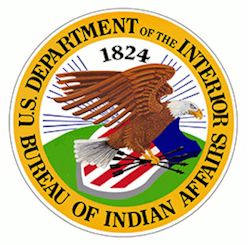Here is a list of the 50 largest federally recognized Indian reservations in the United States by area. It includes all that are larger than 800 km² (300 sq. mi.). Area is defined as all areas included in Tribal Census Tracts by the Census Bureau, and includes water as well as land areas. Statistics are […]
Reservations Overview
Reservations Overview
The quality of life on some reservations is comparable to that in many third world countries, with issues of infant mortality, life expectancy, nutrition and poverty, and alcohol and drug abuse. For example, Shannon County, South Dakota, home of the Pine Ridge Indian Reservation, is routinely described as one of the poorest counties in the nation.
Reservation programs administered by the Bureau of Indian Affairs and the Indian Health Service
24 ViewsMany Native Americans who live on reservations must deal with the federal government through two agencies: the Bureau of Indian Affairs and the Indian Health Service.
Reservation Economics
With the establishment of reservations, tribal territories diminished to a fraction of original areas and indigenous customary practices of land tenure sustained only for a time, and not in every instance. Instead, the federal government established regulations that subordinated tribes to the authority, first, of the military, and then of the Bureau (Office) of Indian Affairs. Under federal law, the government patented reservations to tribes, which became legal entities that at later times have operated in a corporate manner.
Reservation beginnings
25 ViewsIn 1851, the United States Congress passed the Indian Appropriations Act which authorized the creation of Indian reservations in modern day Oklahoma. Relations between settlers and natives had grown increasingly worse as the settlers encroached on territory and natural resources in the West.
By the late 1860s,President Ulysses S. Grant pursued a stated “Peace Policy” as a possible solution to the conflict. The policy included a reorganization of the Indian Service, with the goal of relocating various tribes from their ancestral homes to parcels of lands established specifically for their inhabitation.
